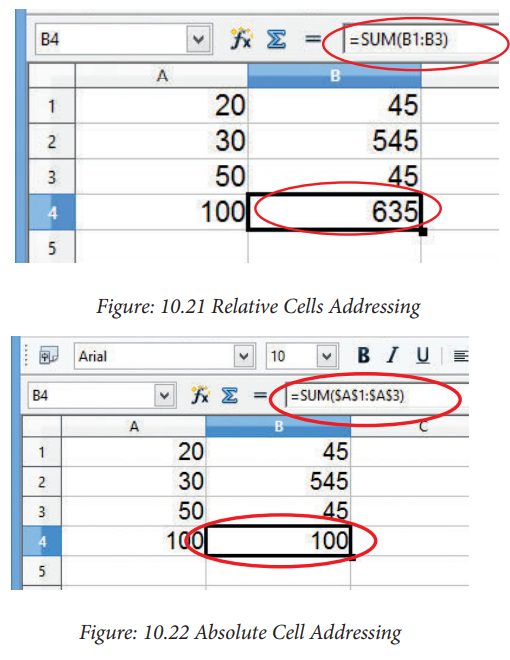

The copy of the formula in column B will be automatically adjusted to =SUM(B1:B9).No, it still does not work correctly neither for OO nor LO.Ĭell references shall act the same way independent of whether they are specified explicilty in the cell itself or by using conditional formatting.Ī correct result is that all four cells on row 12 remain green when moved to row 13 after you insert an empty row inbetween row 11 and 12. If you want to calculate the sum for the adjacent column to the right, simply copy this formula to the cell to the right. Assume you entered the formula =SUM(A1:A9) in row 10. If a formula that refers to exactly this cell is copied relatively to a cell below the original cell, the reference will also be moved down if you did not define the cell coordinates as absolute.Īside from when new rows and columns are inserted, references can also change when an existing formula referring to particular cells is copied to another area of the sheet.

But be careful if you are copying a formula since in that case only the relative references will be adjusted, not the absolute references.Ībsolute references are used when a calculation refers to one specific cell in your sheet. Absolute and relative references are always adjusted in LibreOffice Calc whenever the referenced area is moved. Row numbers will also be automatically adjusted when a new row 1 is inserted. After having inserted a new column A, the formula =SUM(A1:B2) will be automatically updated to =SUM(B1:C2). After inserting the new column, you would therefore have to check and correct all formulas in the sheet, and possibly in other sheets.įortunately, LibreOffice does this work for you. If you later decide to insert a new column in front of column A, the elements you want to add would then be in B1:C2 and the formula would be in F1, not in E1.

The formula to enter into E1 would be: =SUM(A1:B2). What distinguishes a relative reference? Assume you want to calculate in cell E1 the sum of the cells in range A1:B2. When to Use Relative and Absolute References The next formula component "D15:D24" can be marked in red in the same way. For example, the formula component "A1:C5" may be in blue and the cell range in question bordered in the same shade of blue. If, for example, you click the formula =SUM(A1:C5 D15:D24) in a cell, the two referenced areas in the sheet will be highlighted in color. LibreOffice Calc shows the references to a formula. If you press the key combination once more, both column and row references are switched back to relative (A1) The second time, only the row (A$1), and the third time, only the column ($A1). If you start with a relative address such as A1, the first time you press this key combination, both row and column are set to absolute references ($A$1). LibreOffice can convert the current reference, in which the cursor is positioned in the input line, from relative to absolute and vice versa by pressing F4.


 0 kommentar(er)
0 kommentar(er)
